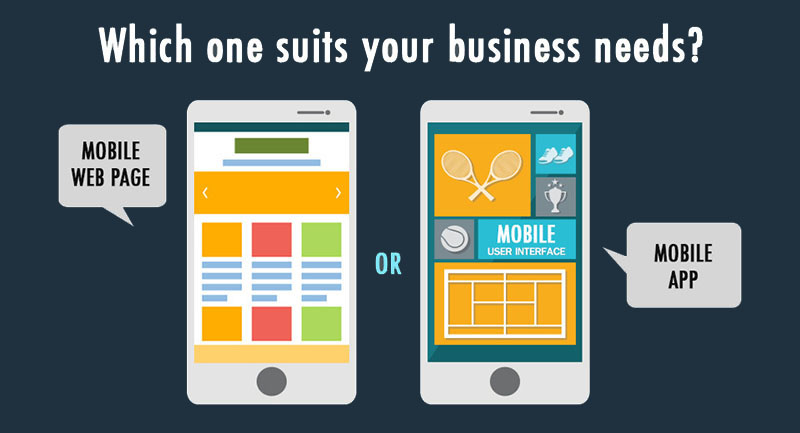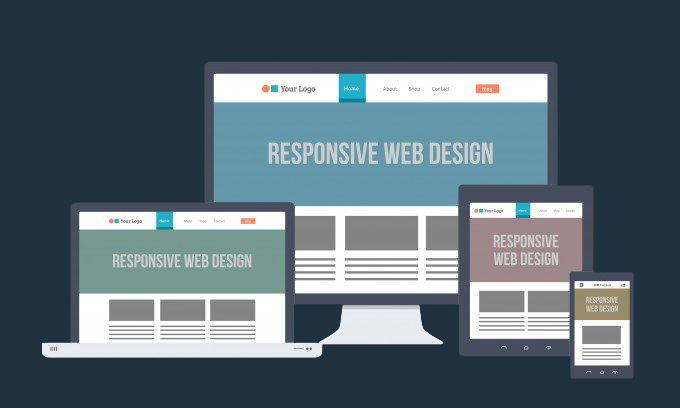Christy Rae SCC WEB120 Big Project
Responsive Web vs Native Mobile App Research

When making the decision on whether to invest in a responsive website over a native app there are many things to take into consideration, the best news is that no matter which way you go both of these are able to be viewed on computers, mobile phones, and tablet devices.
First, what is a responsive website and what is a native application? A responsive website is a website that has been designed to fit content and images to the screen resolution that is viewing it, no matter what device or platform is being used. That means that your website content will be viewable on a large monitor, laptop, mobile phone or tablet. A designer can set text and images to view on each screen resolution no matter what device is viewing it. A native application is an app that is programmed to run on a smartphone or tablet, examples of these include Lyft or Uber car services, although they have a website, the main functionality of their content is being used on the go on a mobile device.
So, how do you make a choice? Knowledge is power in this case! Let us break this down into a few pros and cons of each format.
A responsive design will keep a person on your website. If the website doesn’t function for all devices, it is likely the person visiting will go elsewhere. As pointed out by Maria Murillo on Thinkapps.com, “Responsive web became popular when businesses realized that working poorly on mobile devices could mean the difference between a potential user/customer choosing them or the competition.” (Murillo)

However, beyond the fact that you want to simply keep your customer viewing your site, no matter what device they are viewing it on, one must always take into consideration their overall budget and timeline involved in the project. A responsive website is definitely something that will be created at a lower cost and much quicker than an app. One way to consider your financial investment in your web presence is to realize there are choices that can be made when it comes to the best platform decision for your business. As Kris on Smashstack points out, “If cost is an issue, businesses can leverage their web platforms to feature as many mobile benefits as possible to avoid the financial investments of a native app.” (Kris)
It isn’t all cheap fast and easy when it comes to the world of responsive sites, one thing you definitely want to consider is what type of content and how much content you are putting on a website. If you have a lot of hosted graphics, artwork, videos or pictures you could experience heavy load times. Having a slower load on a mobile device could drive your customer to a faster solution.
You also want to think about how your customer is connecting to your business. With a website you want to keep in mind that it will require an internet or wifi connection to view the content. If the person visiting your site is not in a wifi area or your site will not load due to poor internet/wifi connection, you could lose that customer to another solution. With a mobile app, once that app is downloaded to the device the functionality of the app will work in any environment. Maria Murillo on Thinkapps states it best when she points out that, “The native app will be able to access all of the mobile device’s functions because the app is installed on it and works in conjunction with its various tools. Not only does this mean a better experience for the user, but also an increase in the services your business can offer through your app.” (Murillo)
With that in mind, it is important to focus on the fact that with an app you have direct connectivity to the users mobile device. This means that all the features on your app will connect directly to that device, and ultimately you can use things like push notifications to reach that customer as often as you need in one easy place, unlike with a responsive website which will still require the extra step of email marketing, and remember, with email marketing you could also potentially see your communications hit SPAM folders or not get the immediate attention they deserve. Additionally, a wonderful feature that could drive your customer directly to your front door is access to that mobile device’s GPS, something that can help your location be found immediately and easily. Finally, if you have a business that has a need to connect to people’s cameras or photo files having an app will allow for swift and easy loading of images to your server.

Now it seems that all things with apps are grand and glorious, but you do want to take into account that programming an app requires a complex set of skills and a specific development team that can program across both the Apple and Android operating systems. Further, these apps must also adhere to the guidelines for the stores showcasing the app. A website requires just one team and one development process.
Finally one solid point in the favor of an app, in considering the best path for your development, is the fact that once it is loaded on a phone it is over and done. The app will be on that device every time the person uses it, they will not be struggling to recall your website or potentially stabbing randomly at Google looking for your business again. Maria Murillo with Thinkapps reminds us that, “If you have a native app, they will only have to think of you once. Then, after the app has been downloaded, you will be on their screens and minds every time they use their smartphone.”
Ultimately, it is a case of cost and needs. If you have a small budget and a need for simple access as well as brand awareness, a website will suit your purposes. If you have a large budget, your business is more than just informational or requires secure transactions an application might be the best choice. If you have the dream budget to create the dream package a one-two punch is a way to go - a responsive website and a mobile app.